MARIANI’S
October
14, 2007
NEWSLETTER
Autumn Pumpkins, 2006 by Galina Stepanoff-Dargery
NEWS! TO READ MY NEW BIWEEKLY COLUMN FOR ESQUIRE,
CLICK ESQUIRE.COM.
ARCHIVE: Readers may now access
an
Archive of all past newsletters--each annotated--dating back to July,
2003, by simply clicking on www.johnmariani.com/archive
SUBSCRIBE AND
UN-SUBSCRIBE: You may subscribe anyone you wish
to this newsletter--free of charge--by
clicking here.
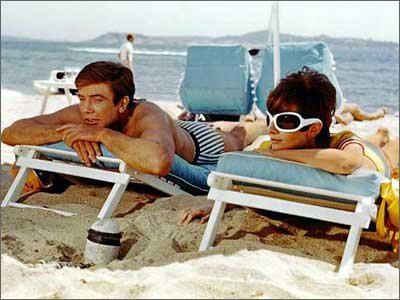
IMPORTANT MESSAGE: There will be no
edition of Mariani's Virtual Gourmet
Newsletter next week, October 21, because Mariani will be on
vacation. The next edition will be October 28.
"Two for the
Road" (1967)
In This Issue
NOW IT CAN BE TOLD! ESQUIRE'S BEST NEW RESTAURANTS IN AMERICA 2007by John Mariani
NEW YORK CORNER: The New Michelin Guide to NYC Sets Standards by John Mariani
NOTES FROM THE WINE CELLAR: Old Vines Grenache by John Mariani
QUICK BYTES
NOW IT CAN BE TOLD! ESQUIRE'S
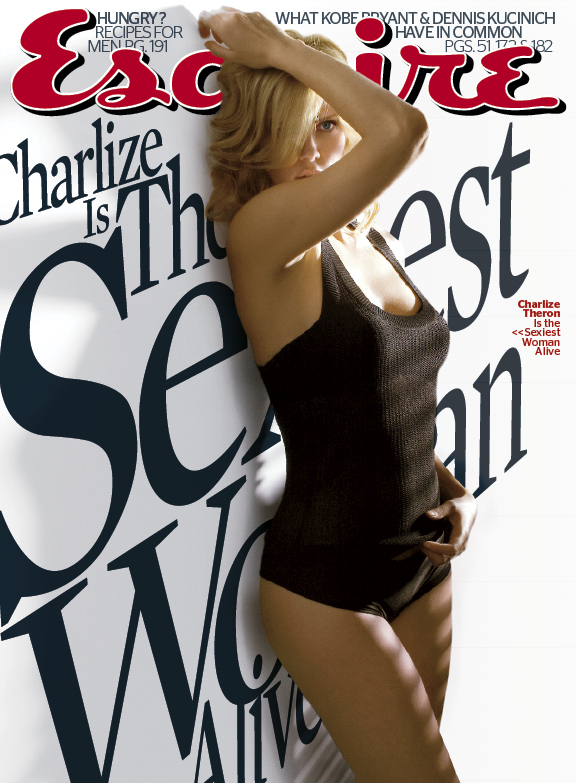
BEST NEW RESTAURANTS IN AMERICA 2007
by John Mariani
My criteria haven’t really changed, but the experience and dedication of a generation of chefs and restaurateurs have turned American cities once considered gastronomic backwaters into serious dining towns, and there is no question that the U.S. now has most of the best and certainly the most diverse restaurants in the world.
What are Esquire’s criteria? First, the restaurant must have opened since last fall. Second, it has to be as good as any other restaurant on the list. Next, it cannot be another link in a chain, even if it’s a chain run by a world-renowned chef like Joël Robuchon or Nobu Matsuhisa. And it cannot be a restaurant whose celebrity chef (all those TV guys) merely attaches his name to the awning then visits only once every three months.
Quality of the food comes above every other consideration, then décor, winelist, and service. Beyond that points are added or taken away depending on the quality of the tablesettings (a lack of tablecloths in an upscale restaurant is disconcerting), stemware (there is no excuse for cheap wineglasses), bar service (doesn’t any bartender in America know how to make a daiquiri?), noise level (which includes ear-shattering techno music), and harmonious lighting (“Waiter, I’ll have the steak and a flashlight”).
If there is one distinguishing factor that ties all these best new restaurants together it’s the palpable feeling that the restaurateur and the chef are really giving their all to please you. So when you make a rez at any of the following, be prepared to dine well, carry on a conversation, drink good wine, and feel that everyone’s real happy you’ve chosen to dine there.
(in alphabetical order)
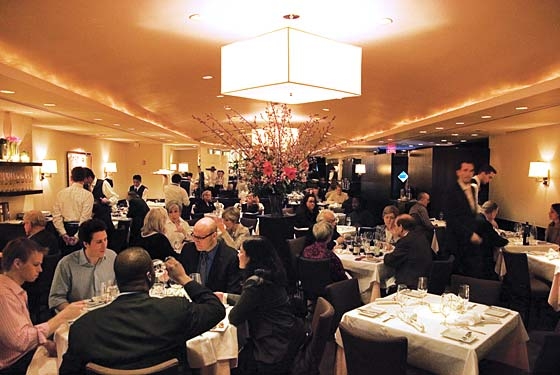
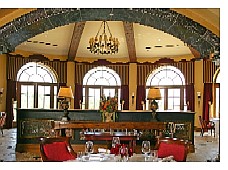
Addison—San Diego
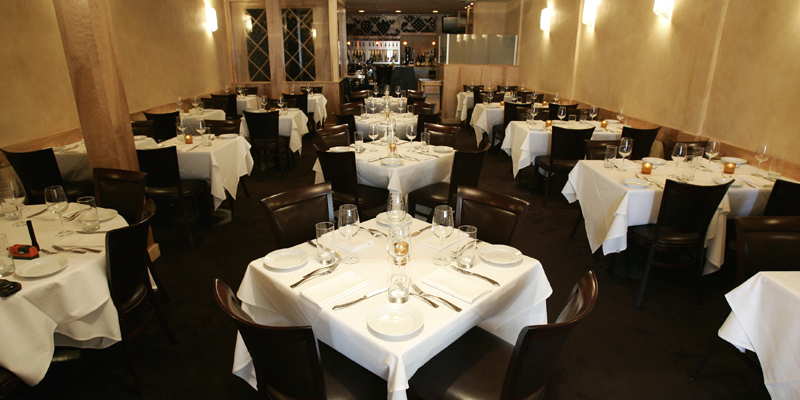
All’Angelo—Los Angeles
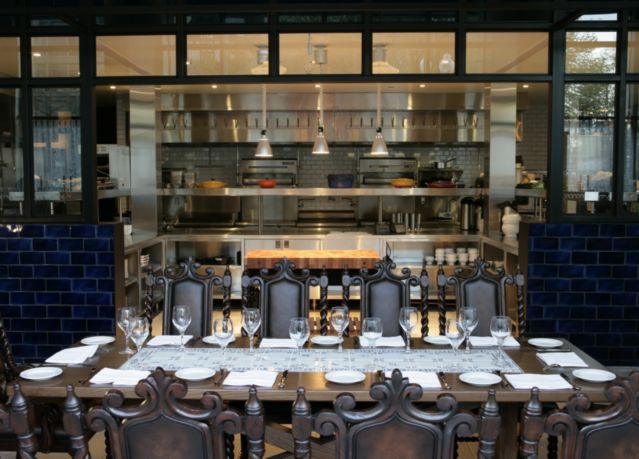
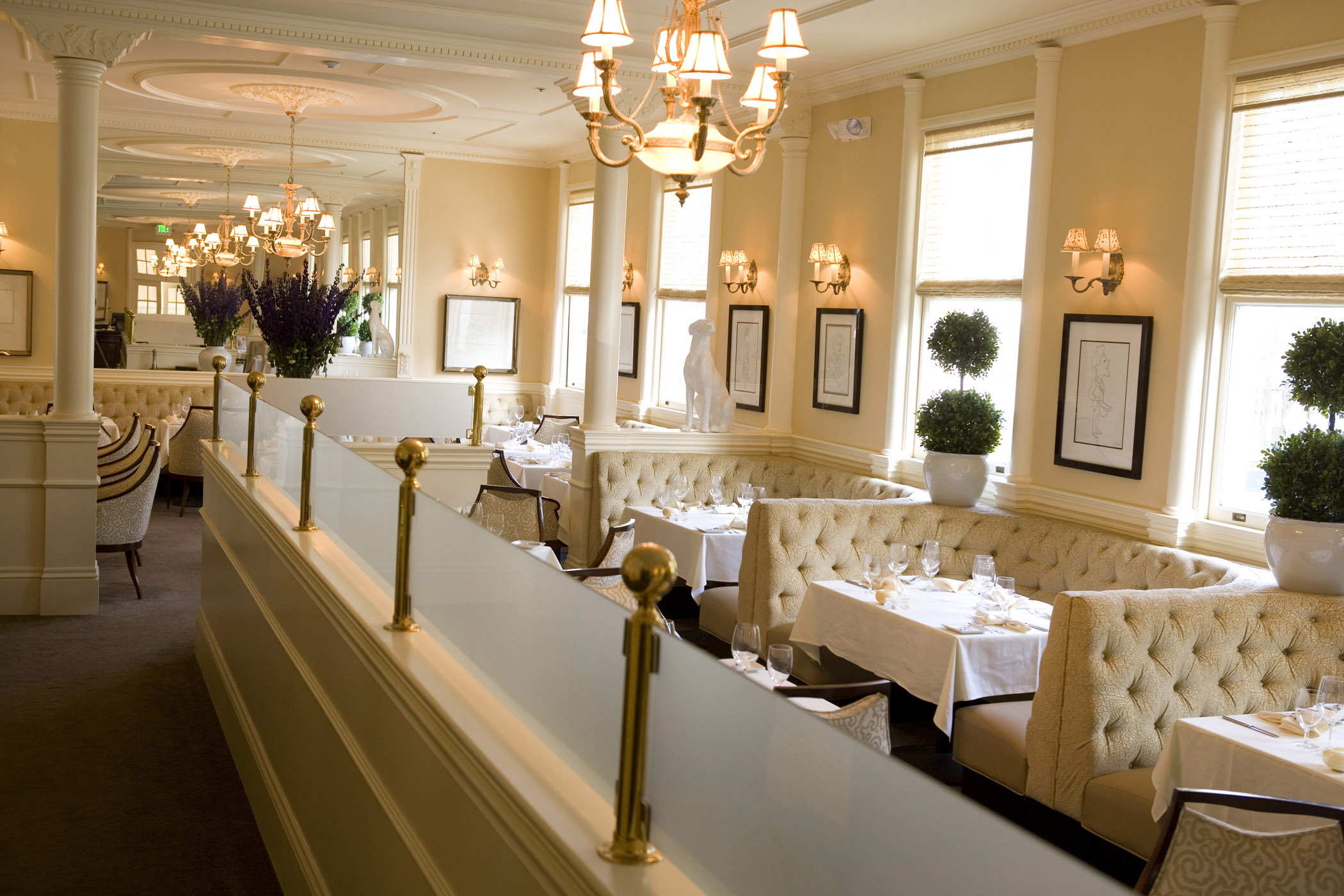
Café Majestic—San Francisco
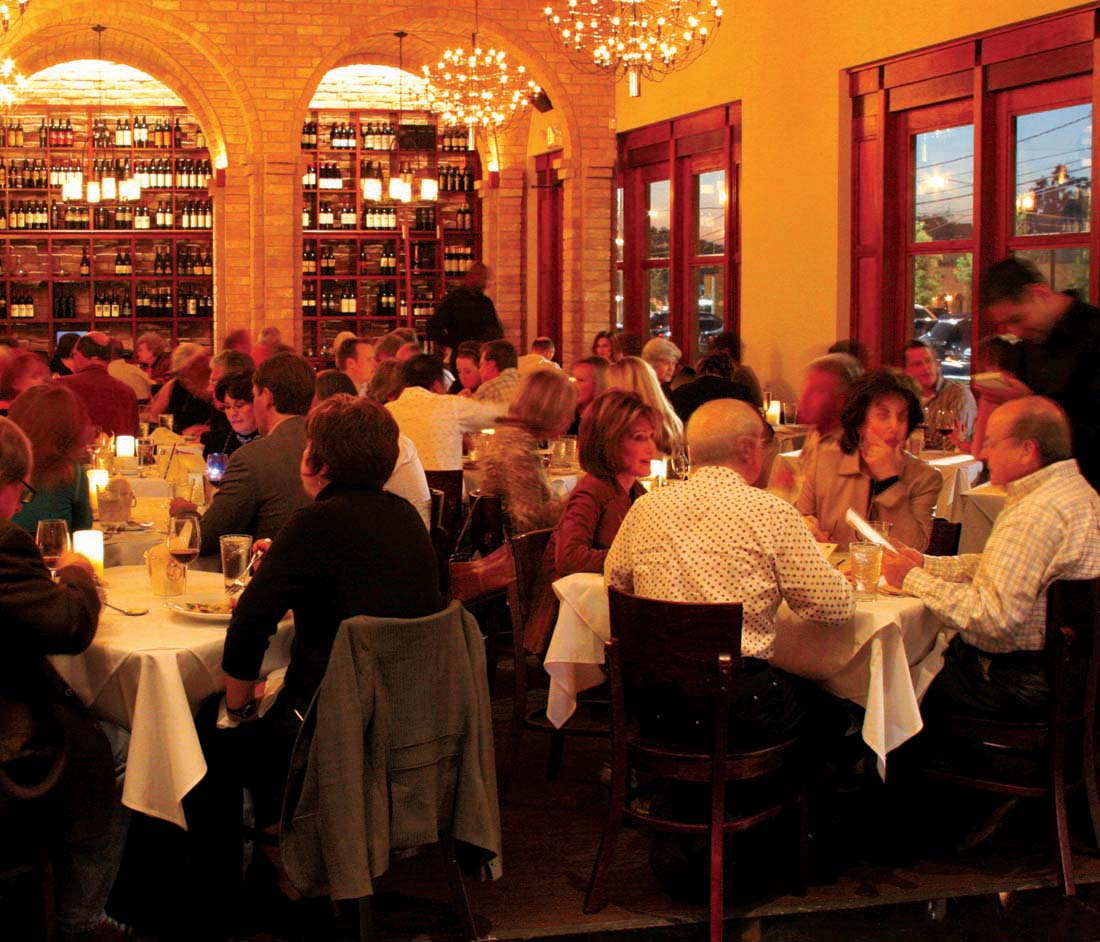
Catalan—Houston
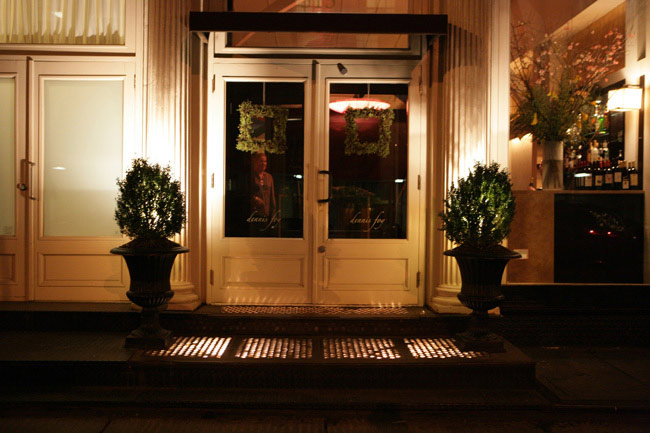
Fearing’s—Dallas
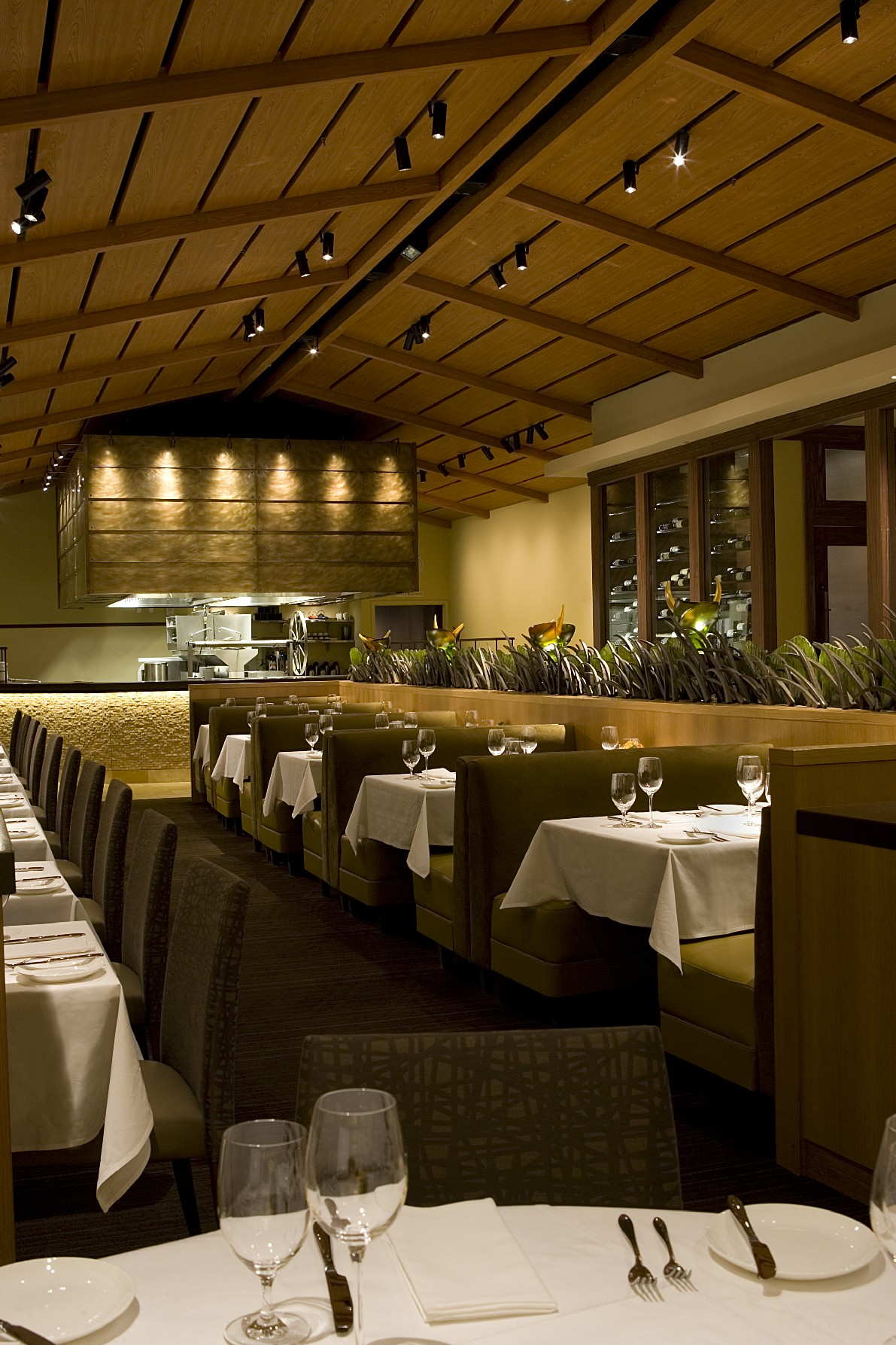
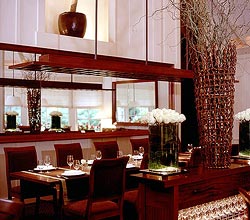
Meadowood—Napa
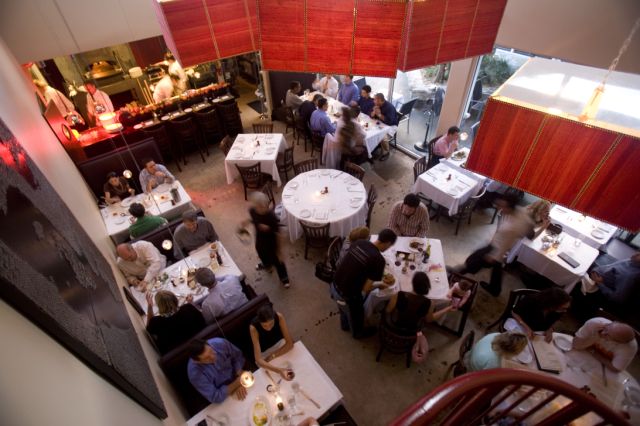
Michael’s Genuine Food—Miami
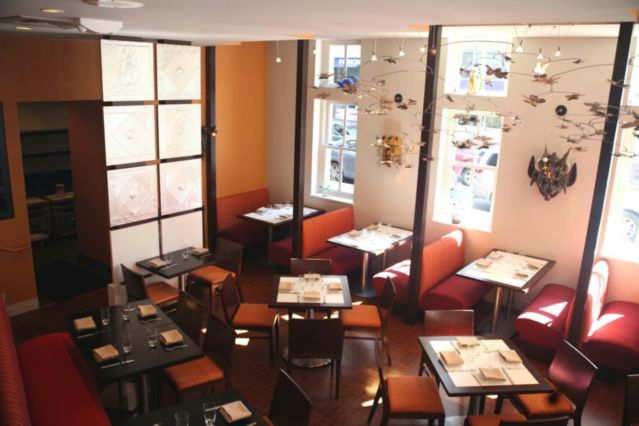
Oyamel—Washington DC

Porter House New York—NYC
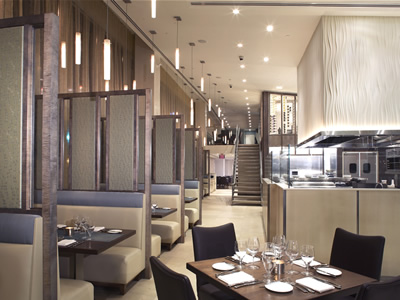
Rae—Philadelphia
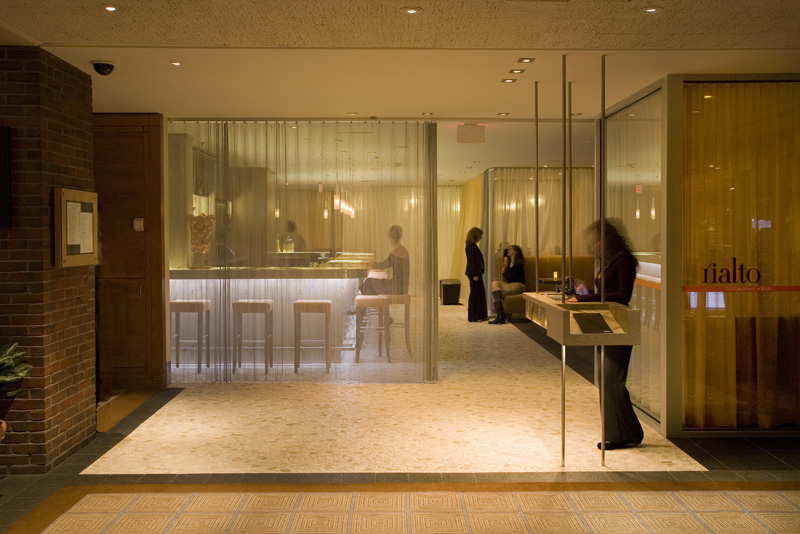
Rialto--Cambridge, Massachusetts
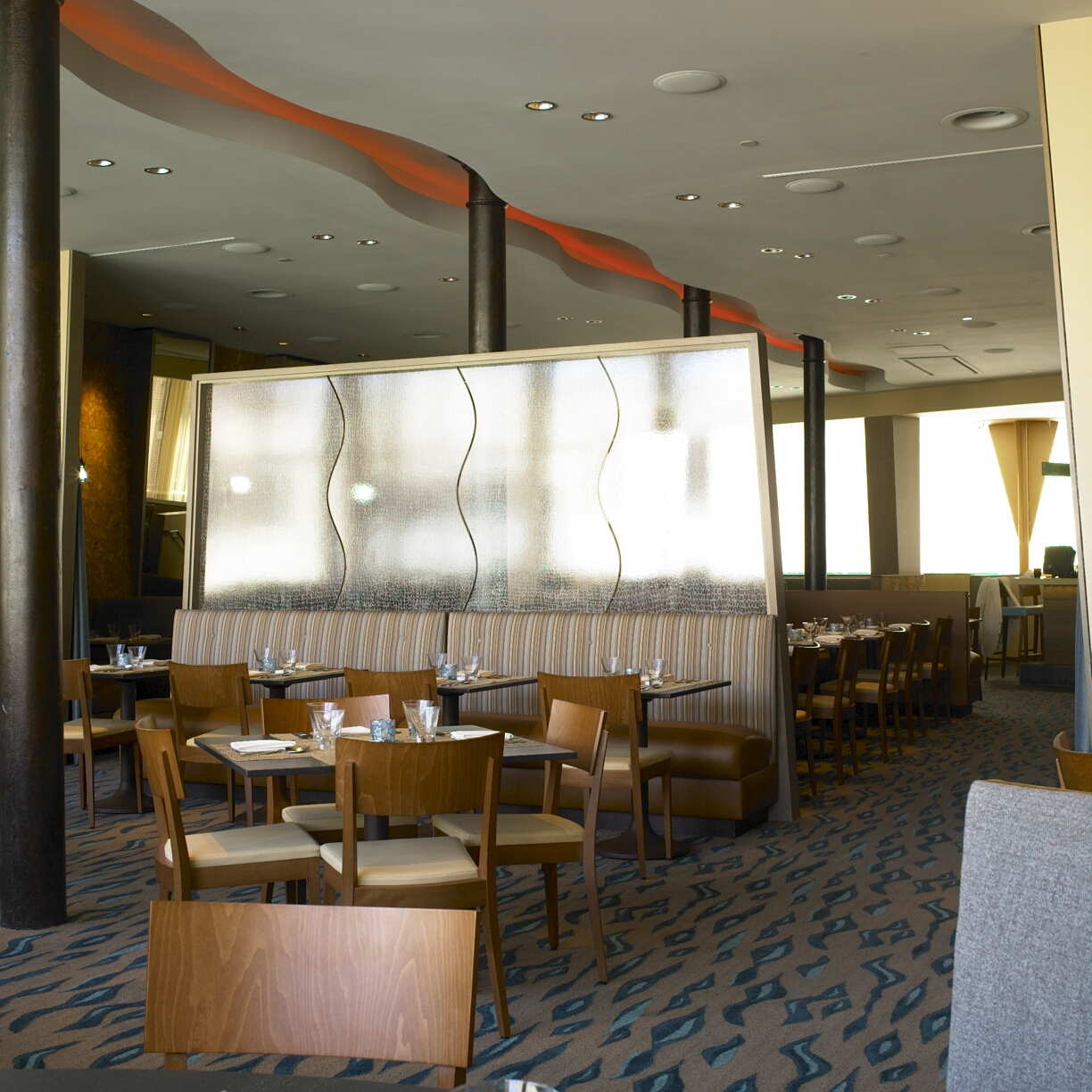
Rocca—Boston
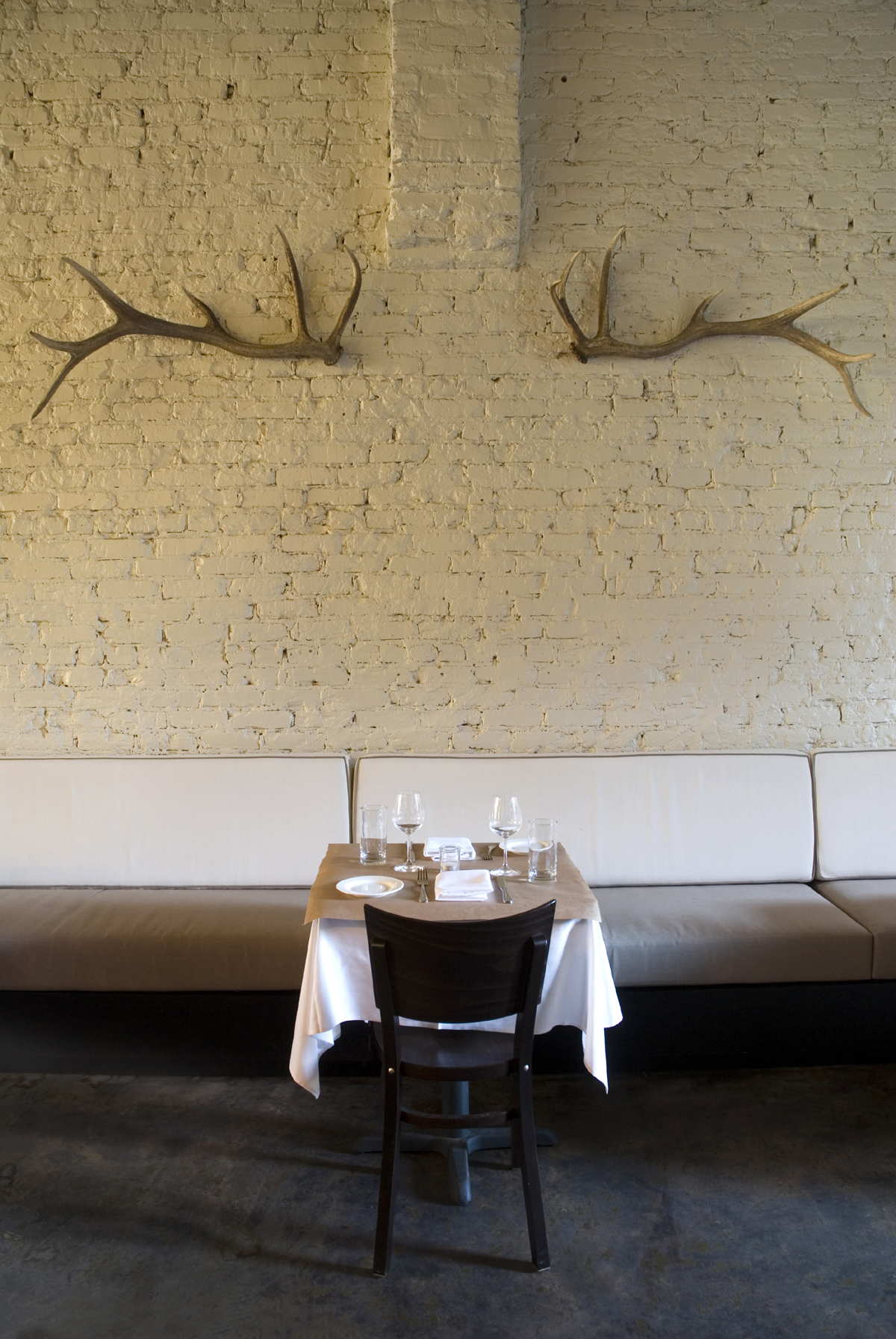
Shaun’s--Atlanta
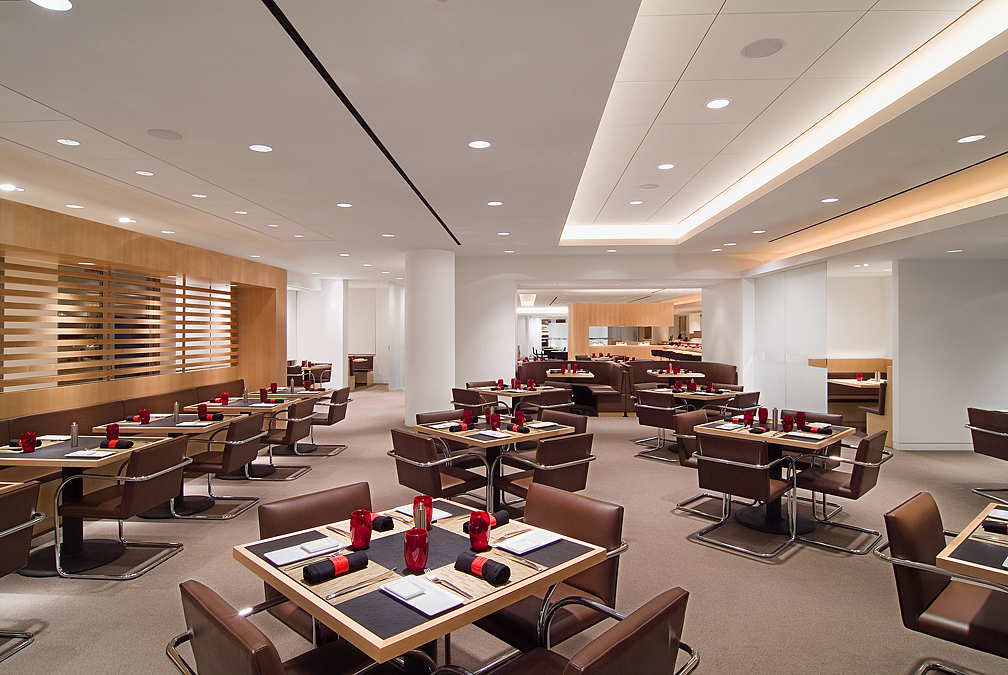
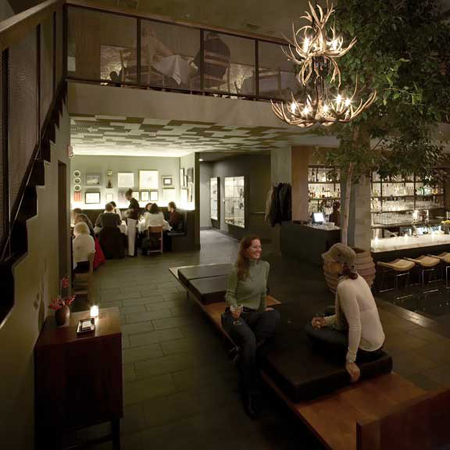
23 Hoyt--Portland, Oregon
NEW YORK CORNER
THE NEW MICHELIN GUIDE TO NYC 2008 SETS A SOLID TEMPLATE FOR OTHER GUIDES
by John Mariani
 The
third, 2008, edition of the Michelin red guide to NYC is not only the
company's most improved production but sets a solid template for
all
other
attempts at charting and explaining the quixotic world of dining out in
New York. No matter what objective and subjective criticisms one
might make about choices and ratings in the new guide (and the outcry
has already begun among the NY media), no other guide gives as much
information in so
appealing and colorful a form as the new volume, and that includes
Michelin's own guides to the rest of the world, of which there
are 19 volumes covering 22 countries. Indeed, when the first NYC
Michelin came out in 2006, director Jean-Luc Naret said it would
be the format for all subsequent volumes, after decades of running
only the barest of text, stars, and symbols on the restaurants covered.
The
third, 2008, edition of the Michelin red guide to NYC is not only the
company's most improved production but sets a solid template for
all
other
attempts at charting and explaining the quixotic world of dining out in
New York. No matter what objective and subjective criticisms one
might make about choices and ratings in the new guide (and the outcry
has already begun among the NY media), no other guide gives as much
information in so
appealing and colorful a form as the new volume, and that includes
Michelin's own guides to the rest of the world, of which there
are 19 volumes covering 22 countries. Indeed, when the first NYC
Michelin came out in 2006, director Jean-Luc Naret said it would
be the format for all subsequent volumes, after decades of running
only the barest of text, stars, and symbols on the restaurants covered.All restaurants now get a thorough write-up (though often only a slight update from last year's), with restaurant websites noted and the entries tagged with all those cryptic symbols Michelin so loves--including a clock for late dinners, a wad of bills for cash only, and an odd knife and spoon icon that somehow indicates brunch. Star restaurants get fuller treatment, with color photo, and three suggestions each for appetizers, entrees, and desserts from recent menus. I also like that they used a darker easier-on-the-eyes ink for the text font this year.
Beyond the gossip the star system generates (for a discussion of how Michelin goes about their investigations, see my article from 2005: Michelin), the real value of the guide is in showing that one need not pay $100 per person to dine well in NYC: The "Bib Gourmand" listings--52 of them--are for restaurants where, for $40 or less, you can enjoy "two courses and a glass of wine or a dessert," while "Where to Eat for Less Than $25" points readers to delightful, neighborhood New Yawk places like Katz's on the Lower East Side, Sripraphai in Queens, Momofuku Noodle Bar in the East Village, and Utsav in midtown.
Having taken criticism in the past for never saying a single negative word about any restaurant, Michelin now tosses in a few quibbles, though they are extremely mild: "Waiting for a table [at Spark's] is de rigeur but speedy bartenders will shake a frosty martini for you in the meantime" does not begin to suggest the blatant rudeness of that midtown steakhouse where your contention that you have a reservation at seven o'clock gets a retort of, "Everybody has a reservation at seven o'clock." And the quibbles seem doled out with softer gloves to some than to others. Thus,
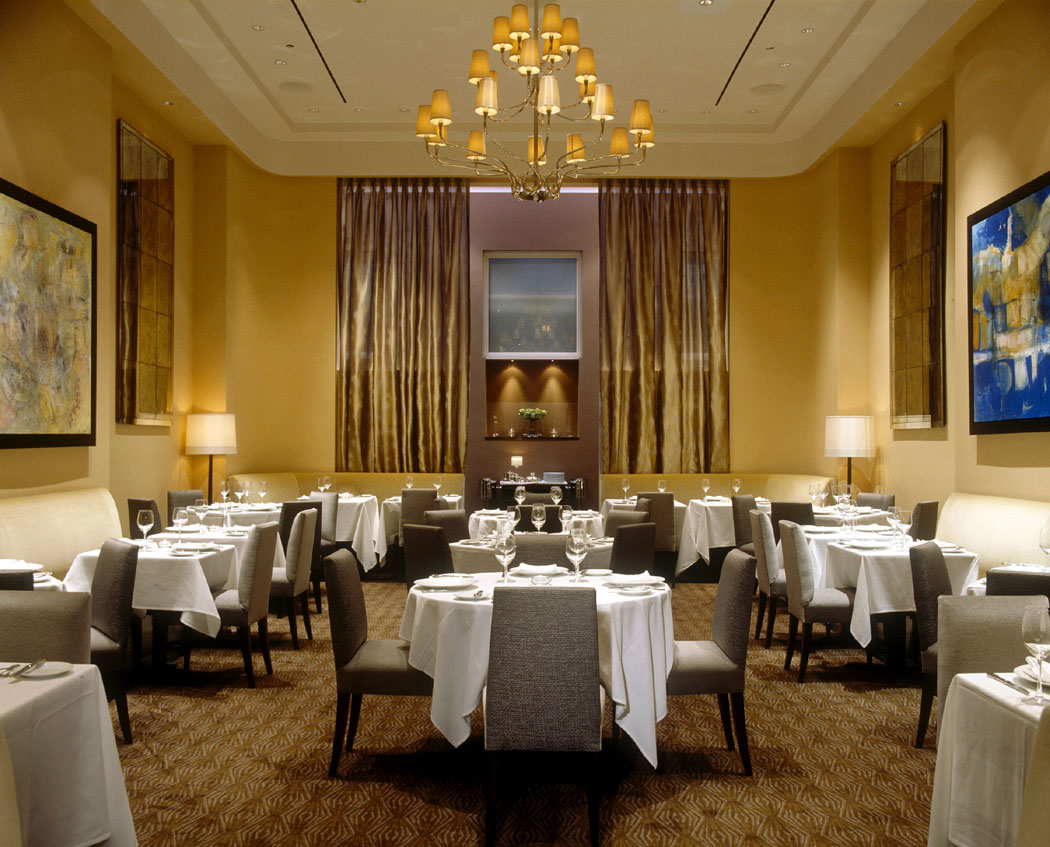 Estiatorios Milos
is called "cacophonous" (not really)
while no mention whatever is made of the heavy metal rock decibel
levels at Babbo (which gets
one
star) and the ear-splitting Morandi.
The
inches between tables at Spotted Pig
(a too-generous one star) go
unmentioned while Toqueville is said to have a main dining room where
"tables snuggle close together," which, as the photo of the room to the
right shows, is simply not true.
Estiatorios Milos
is called "cacophonous" (not really)
while no mention whatever is made of the heavy metal rock decibel
levels at Babbo (which gets
one
star) and the ear-splitting Morandi.
The
inches between tables at Spotted Pig
(a too-generous one star) go
unmentioned while Toqueville is said to have a main dining room where
"tables snuggle close together," which, as the photo of the room to the
right shows, is simply not true.Now, to the stars: I don't argue at all with the choice (unchanged since last year) of Per Se, Le Bernardin, and Jean Georges--Mon Dieu! all French!--as three star restaurants, and the two-star category ("Excellent cuisine, worth a detour") is generally sound--Bouley, Daniel, Del Posto, Masa, and Picholine--although I would certainly not place Gordon Ramsay at the London in that category, whose first chef was summarily fired for not garnering high marks from local media. To suggest that Gordon Ramsay (whose TV-fevered owner is far too busy with shows like "The F-Word" to cook in his own restaurants) is a better restaurant than so many that Michelin awards only a single star to ("A very good restaurant in its category"), like Café Gray, Cru, Gotham Bar & Grill, Oceana, TriBeCa Grill, and The Modern is worrisome. (Factotum: When presented with the news he'd won two stars, Ramsay was nowhere near New York; he was in L.A.)
Michelin has always insisted that it only awards ratings by what's on the plate, as if blind to decor, service, winelist, price, etc. Few reasonable people believe this when all the three star and most two star restaurants are lavish, multi-million dollar productions, here, in London, in France, and throughout the rest of Europe (and they are almost invariably French). Michelin's defense is to point out that it does award stars to ugly, poorly serviced restaurants like Peter Luger, noting only "Don't be fooled by the beer hall ambiance." If the ambiance at Luger was anything like a true rathskeller in Munich or even Milwaukee, one might actually applaud it. But Luger, despite having great porterhouse steaks, is a restaurant that plays fast and loose with reservations, has a geriatric staff that always dissuades you from ordering anything but steak, a bunch of side dishes not worth mentioning, and a crummy winelist. To give Peter Luger and a completely inane French bistro like États-Unis one star and to deny the same to superb restaurants with great food, like Eleven Madison Park, Felidia, Lever House, Le Cirque, Brasserie, Chanterelle, and many others is simply bewildering. The removal of a star from Craft goes unexplained in the write-up, though it basically verbatim, if slightly trimmed, from last year's.
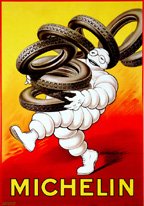 One can't, of course, expect a major production like this
to be as up-to-date as a newspaper or weekly magazine, so there's no
sense in questioning a rating given to a restaurant whose chef just
left last month or whose new one just came aboard. To Michelin's
credit, there is
evidence some details had to be yanked at the last moment, noting that
a kitchen is "in flux." But there are other head-scratchers here:
One can't, of course, expect a major production like this
to be as up-to-date as a newspaper or weekly magazine, so there's no
sense in questioning a rating given to a restaurant whose chef just
left last month or whose new one just came aboard. To Michelin's
credit, there is
evidence some details had to be yanked at the last moment, noting that
a kitchen is "in flux." But there are other head-scratchers here:-TV omnivore man Anthony Bourdain is said to "preside over the kitchen [at Les Halles], turning out classic bistro fare," even though Bourdain said long ago he really doesn't cook much anywhere any longer.
-Oceana gets a well-deserved star but there is no mention of the superb new chef here, Ben Pollinger. Nor is there any notice of a great chef like Odette Fada as chef at San Domenico.
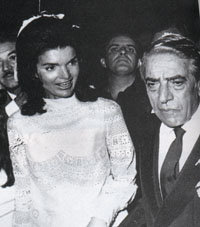
-The text no longer sounds as if it had been translated from French, but some of the details suggest a rather dated sense of au courant New York, as when the hamburger at `21' Club is described as "favored by Ari Onassis." Who cares? Another burger, at August, is said to be "jazzed up with housemade mayonnaise."
-There are several first-rate restaurants that are not included in the guide, while others are so meretricious as to boggle the mind as to their inclusion. Why no inclusion of Wall Street's best steakhouse, Flames? Or the terrific gastro-pub E.U. on the Lower East Side? Or the delightfully authentic Italian restaurant Centovini on Houston Street? Or the best all-around restaurant in the Meat Market District, Valbella? And why would they waste paper on awful antiques like Sardi's and Isle of Capri but ignore the Russian Tea Room? Why bother with a place like Cipriani Downtown where the food is dull, the prices insane, and the service a disgrace to all but the Eurotrash who thrive on it? Or the thoroughly boring, insipid, intensely loud Café Cluny? How can the guide claim to include only "the best of the best" with honkers like that in it?
-Michelin seems to accept every steakhouse's claim that they use "dry-aged USDA Prime beef" when such claims are so often completely specious. I would have hoped the Michelin inspectors could tell the difference.
Still, the Michelin Man has done his homework, improved his New York dialect, and gotten more in touch with the city's diversity and spirit. He is still being a tad too kind to everyone (how un-French!), but, especially by comparison to the ho-hummeries of the Zagat guide, the new Michelin is the best thing out there.
Michelin's second annual guide to San Francisco will be published on Oct. 24, and two new guides, Los Angeles on Nov. 14, and Las Vegas on Nov. 16.
NOTES FROM THE WINE CELLAR
Old Vines Grenache Shows a New Face of a Sometimes Funky Grape
by John Mariani
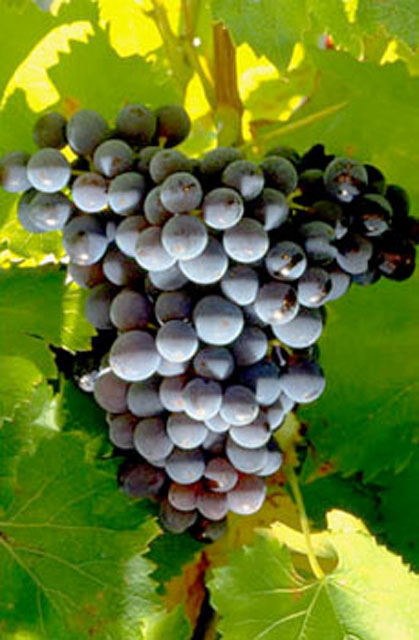 Even though it’s the world’s most
widely
planted grape to make red wine and rosés, grenache is
certainly not on the tip
of most winelover’s tongue the way chardonnay, cabernet sauvignon,
pinot noir,
and other varietals are. Probably native to
Even though it’s the world’s most
widely
planted grape to make red wine and rosés, grenache is
certainly not on the tip
of most winelover’s tongue the way chardonnay, cabernet sauvignon,
pinot noir,
and other varietals are. Probably native to The popularity of grenache among winemakers is due to its very high yield, particularly with young vines. Although long been associated in
So a tasting and lunch by the Wine Media Guild at Felidia restaurant in
My first surprise was the price of some of the samples, ranging from a low of $14 to a high of $264, this last, Clos des Fees Petite Siberie 2004, made from 100 percent grenache, using 80 year-old vines. It was amazingly dense, very dark, big bodied with 15 percent alcohol, almost chewy, but I’m not convinced it’s worth that kind of money.
I was not entirely surprised to find how much range in flavors there was in the wines. The Sardinian volcanic soil of Sella & Mosca’s Cannonau 2004 ($11) added measurably to the minerality and distinctly peppery flourish of the wine on the palate, though it faded fast. Others had flavors that were, as a colleague at the tasting put it, “funky,” with one example, Saint Jean du Barroux l’Oligocène 2004 from the Ventoux region of France ($28), with 75 percent grenache and the rest syrah, carignan, and cinsault, smelling like newly cut plywood, and another, Mas de la Dame Coin Caché 2003 ($30) from Les Beaux de Provence, smelled awful, not so much oxidized as just plain malodorous.
 Ey’s own Ey
Vineyards Vigne Las
Collas 2004 ($14) from 60-year-old vines in Roussillon had a
distinct barnyard mustiness on the nose, but
by the time we sat down to a lunch of pasta with duck ragù, it
had dissipated
and the wine showed solid acidity that cut through the rich sauce. It was true to form, spicy, peppery, and delicious. A very
good buy at this price.
Ey’s own Ey
Vineyards Vigne Las
Collas 2004 ($14) from 60-year-old vines in Roussillon had a
distinct barnyard mustiness on the nose, but
by the time we sat down to a lunch of pasta with duck ragù, it
had dissipated
and the wine showed solid acidity that cut through the rich sauce. It was true to form, spicy, peppery, and delicious. A very
good buy at this price. I found that the higher the alcohol levels went in the samples—from 13.5 up to an astounding 15.9 percent—the more fruit was prominent, as in a Villa Creek Cellars 2005 ($40) from Paso Robles, California, though after a sip or two its lushness gave way to the jammy flavors of overextraction. Kaesler Grenache “The Fave” 2005 ($42) from
The wines in the middle, around 15 percent, seemed to fare best in the tasting. My favorites included a medium-bodied Gilles Troullier l'Ésprit du Temps 2005 ($65), made from 80 year old
A Spanish example from Montsant, the Capçanes Cabrida 2004 ($65) was a 100 percent grenache from vines dating back a century, and the complexity of the wine seemed to bear out Ey’s statement that intensity and quality come from vines that have developed character by absorbing the minerality of the terroir.
Two Chateauneuf-du-Papes showed very well: Domaine La Roquete 2003, with 75 percent grenache—I’m guessing was syrah and cinsault—was light in color but quite voluptuous on the palate, revealing layers of bright red fruit, a very good buy at $25. Janasse Vieilles Vignes 2004 with 85 percent grenache, 3 percent syrah, 7 percent mourvèdre, and 5 percent other varietals of the 13 allowed by appellation laws, seemed a very sophisticated wine, with a blast of fruit and tannin, then a mellowing on the mid-palate, but it faded regrettably fast. At $110, I expected more bang for the buck.
The grenache I liked most as a lighter style, good for quaffing with salmon or any red meats was a $25 Pirramimma Old Bush Grenache 2003 from
If the tasting didn’t convince me that grenache on its own or as a blender has yet leapt to greatness—especially when it costs over $50 a bottle—I came away impressed by the various ways the grape exhibits itself from terroir to terroir and winery to winery. In its adaptability and prodigality, grenache is something of a workhorse grape, not yet in the league of a thoroughbred.
John
Mariani's weekly wine column appears in Bloomberg Muse News,
from which this story was adapted. Bloomberg News covers Culture from
art, books, and theater to wine, travel, and food on a daily basis, and
some of its articles play of the Saturday Bloomberg Radio and TV.
~~~~~~~~~~~~~~~~~~~~~~~~~~~~~~~~~~~~~~~~~~~~~~~~~~~~~~~~~~~~~~~~~~~
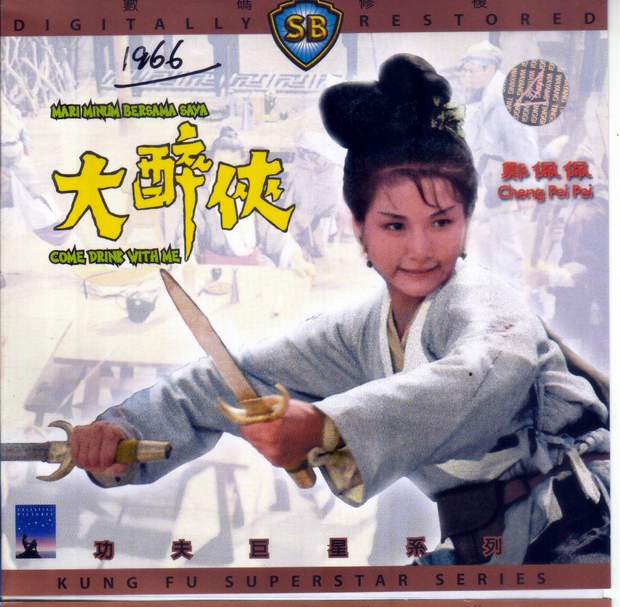
Quentin Tarantino Has Already
Bought the Screen Rights
In Tapei City, Taiwan, A waitress named Xu sued a co-worker for giving her the nickname “Looking for Death” and was compensated for her distress by a local judge.
Department of Anal Retentives

“Wipe That Smirk Off Your Face. Some of the brightly colored paper napkins are coated with a glossy look, which makes them less absorbent and therefore useless for a slob like me. I also have an aesthetics issue with really bold napkins in primary colors because they tend to intensify the stains of greasy foods.”—Steve McDonaugh, Talk with Your Mouth Full (2007).
* On
* On Oct. 22 in DC, Ceiba’s next 4-course $125 pp Wine Dinner will be held by Executive Chef Jeff Tunks, featuring Chilean wines, presented by Matias Rivera, winemaker of Cousino-Macul. Call 202-393-3983. www.ceibarestaurant.com
* On Oct. 30 for Halloween, Chef Christophe Emé has created a 7-course menu incl. dishes like Vampire Beet Ravioli and To Die For Petit Fours at his restaurant Ortolan in
* From Nov. 1-4 the Denver International Wine Festival will feature more than 400 wines presented by proprietors and winemakers from around the world, to be held at The University of Denver's
* Starting Nov. 7- Dec. 7, NYC’s French Culinary Institute will team with HELP USA to host HELPCOOK FOR A CAUSE, with FCI chefs hosting a series of 6 instructional evenings, consisting of 3-hour hands-on holiday cooking classes, incl. a 3-course holiday dinner paired with wine. $450 pp. for the cooking class, 4-course dinner with wine, a signed copy of the FCI's cookbook The Fundamental Techniques of Classic Cuisine, a FCI apron, and the recipes and grocery list from their class menu. Visit www.helpusa.org/FCIcookforacause or call 1-800-280-0073.
* From Nov. 8-18 Mexico's Riviera Nayarit, and its neighbor Puerto Vallarta will host the annual Festival Gourmet International, featuring the 24 of the region's most acclaimed restaurants, incl. Frascatti in La Cruz de Huanacaxtle; Aramara at the Four Seasons Resort Punta Mita; Piaf at the Grand Velas Resort & Spa, Nuevo Vallarta; Tramonto at the Grand Mayan Resort, Nuevo Vallarta; Bellavista at the Marival All Inclusive Grand & Club Suites, and the Villa del Palmar Flamingos Hotel in Flamingos. Also, international guest chefs will present signature dishes at participating restaurants. Visit www.FestivalGoumet . Casa Velas will offer sculinary events on Nov. 15, hosting the Cheese of the World & Monte Xanic Wine Tasting at its Emiliano restaurant. $25 pp. Also Chef Santiago Perez Ontiveros and Guest Chef Gerard Dupont, Pres. of the Academie Culinaire de France, will prepare special menus that week.
* From Nov. 8 – 11 the second annual Art of Food &
* On Nov. 9 & 10,
* On Nov. 9 Diwali, the Hindu festival of lights, will be celebrated at Chor Bizarre in
: I am happy to report that the Virtual Gourmet is linking up with two excellent travel sites:
Everett Potter's Travel Report:
Tennis Resorts Online: A Critical Guide to the World's Best Tennis Resorts and Tennis Camps, published by ROGER COX, who has spent more than two decades writing about tennis travel, including a 17-year stretch for Tennis magazine. He has also written for Arthur Frommer's Budget Travel, New York Magazine, Travel & Leisure, Esquire, Money, USTA Magazine, Men's Journal, and The Robb Report. He has authored two books-The World's Best Tennis Vacations (Stephen Greene Press/Viking Penguin, 1990) and The Best Places to Stay in the Rockies (Houghton Mifflin, 1992 & 1994), and the Melbourne (Australia) chapter to the Wall Street Journal Business Guide to Cities of the Pacific Rim (Fodor's Travel Guides, 1991). Click on the logo below to go to the site.
~~~~~~~~~~~~~~~~~~~~~~~~~~~~~~~~~~~~~~~~~~~~~~~~~~~~~~~~~~~~~~~~~~~~~~~~~
MARIANI'S VIRTUAL GOURMET NEWSLETTER is published weekly. Editor/Publisher:
John Mariani. Contributing Writers: Robert Mariani, Naomi
Kooker, Kirsten Skogerson, Edward Brivio, Mort
Hochstein, Suzanne Wright. Contributing
Photographers: Galina Stepanoff-Dargery, Bobby Pirillo. Technical
Advisor: Gerry McLoughlin.
Any of John Mariani's books below
may be ordered from amazon.com by clicking on the cover image.
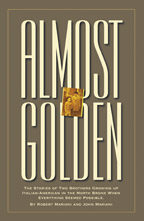 My
newest book, written with my brother Robert Mariani, is a memoir of our
years growing up in the My
newest book, written with my brother Robert Mariani, is a memoir of our
years growing up in the For those of you who don't think of the Robert and I think you'll enjoy this very personal look at our --John Mariani |
 |
 |
 |
 |
 |
 |
copyright John Mariani 2007

